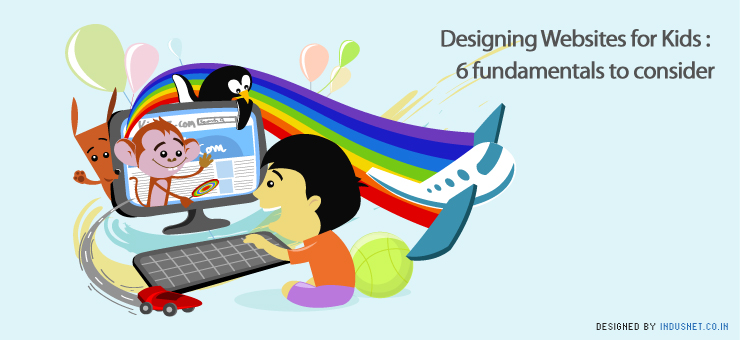
Talking about kids, most companies desire to create a website which is more colorful, less formal, more invigorating and a design that does not require you to follow too many rules. This kind of an opportunity is rare to come by if you are a professional web designer and if you’re clientele is mostly a corporate one requiring you to follow the norm.
Kids are now more web-savvy as their access to the Internet has increased over time. They are on the lookout for better and more interesting things to do. While parents cannot hand hold kids all the time, website designers/owners must undertake the responsibility of delivering safe and child proof information to the kid accessing their website.
Here are a few handy points one can lay there basis on for creating a kid’s website:
1.Use Vivid and Lively Colors
Lively and energetic colors are bound to capture and grasp a kid’s attention for a longer time. A kids’ website does not have to be filled with uniform or professional colors. Contrasting shades and colors you fancied and never thought could be used can take their place in this design. The important thing is, it should create some amount of energy, attracting kids and parents to look on further.
Outline a design that will perk up the users mind, making the kid want to get more absorbed in the game and something that will register in his memory so that he will come back to the same website the next time he logs in.
2.Create an Upbeat Mood
Ensure you create a happy mood all through the website. The kid should feel the positive vibes when he browses through the website, giving him more ideas to add on to something he is already at. Constructing a happy mood will also make the parent look forward to the kid engaging with the same website, having no objection to its usage.
3.Increase Interaction
An interactive website will prove challenging and communicative to a kid. By allowing the kid to participate in contests, quizzes, make your own creation activities, a sense of healthy competition develops in the kid, training him for such activities even in school. This will also prepare him to face healthy competition in a balanced way. Creating opportunities to showcase the kid’s creation sets a platform to do better when given a second chance.
4.Keep Your Content Simple
Keep the content simple. Do not talk down or even make it jargon heavy. Balance the images with the text. While images can speak for themselves, having no content will lure the viewer away from the page by not sharing and explaining more than what is displayed. The layout though simple should not get boring and neither should it be complex that the viewer loses his way.
5.Use Everyday Elements
While designing the website, use elements that children come across in everyday life. Trees, water, kitchen vessels, animals, vehicles this will help them understand what you are showing and also will help them remember the object easier, acting as a reference image. Animating the object will serve two purposes: one, for the child to remember the newly introduced everyday object and two, it also will help him remember the object by itself. For eg: Introducing trains through talking Thomas the Tank engine will help the child remember TRAINS and it’s uses, the way it moves and what it runs on.
6.Educate while Playing
If you find the moral need that you need to educate a child as well as entertain him, make this a part of your website. Feed in content that will help them learn basic things. It might be a fun way in teaching them about sea animals or educate them about the nature. Children grasp things very fast. Sharing the right information the best way for the first time is of utmost importance. Eg: The Discovery Kids website has an element of fun and education attached to it that a kid can have fun learning.
While these basic rules are kept in mind, a few alterations need to take place depending on the age group of the kids the website is addressed to. By understanding the child demographic your business is catering to, you can create websites that are effective, kid-friendly and attractive.